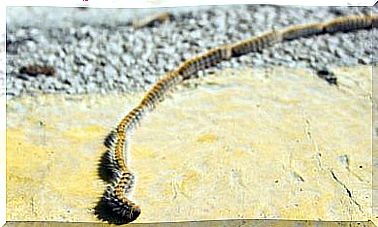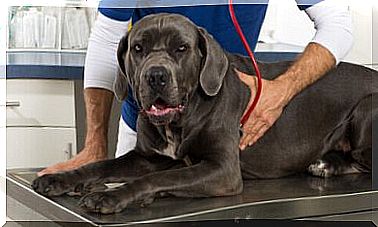Are Dogs Tickled?

If you’ve ever wondered why your fur sometimes squirms or escapes when you touch a certain part of your body, the answer is what you suspect. It’s just that, like humans and other mammals, dogs are also ticklish.
Some facts about tickling

Tickling, that nervous excitement accompanied by involuntary laughter, as defined in the dictionary, is generated by similar mechanisms in different species. They are activated in the part of the brain known as the hypothalamus and specifically are produced by the same pain receptors.
The brain reaction then occurs through the activation of a defense mechanism. When the touch is not strong enough for pain to occur – and generates an intense desire to get away from the situation – the brain informs you that there is no need to provoke an action, fight, fear or flight response.
For this reason, except in the case of schizophrenics with delusions of persecution, it is impossible for us to tickle ourselves.
Everything seems to indicate that the reason why parents start tickling their children is to help them to react to possible dangerous situations. This would also explain the fact that we feel tickles in vulnerable areas of the body.
How to tell if dogs are ticklish
To see if your four-legged friend is ticklish, watch his reaction to brushing or stroking his belly or sides. Chances are, one of your paws will start to shake intermittently.
This reaction, known as “playing the guitar”, is a reflex – or involuntary – act that is produced when you touch certain areas of your furry’s body. These places can vary from one dog to another.
Under the skin of furry ones there are a lot of nerve endings that connect with their spinal cord. When they are stimulated through the epidermis, these reflex acts are generated that cause the tickle that the animal feels.
How furry people react to tickling
Keep in mind that, just like humans, dogs can either enjoy or hate tickling.
If the animal sticks with you so you can continue with the tickle section, it’s obvious he likes it. If the feeling is unpleasant for him, he will consequently withdraw.
For example, in the case of the ears and paws, tickling usually causes the same sensation as an insect climbing the body. And as you already know, an annoying and annoying flea is not pleasant for your pet.
Where do dogs usually get tickled?
Below, we’ll detail which parts of the body dogs tend to be most tickled:
- in the paws
- in the ears
- In the belly, especially in the lower part
- In the neck
- On the loin, on the parts near the hind legs
See if your dog likes the tickle

Author: sciondriver
So, there’s no one better than you at knowing whether your dog likes certain things or not, so you’ll know if he likes or suffers when you tickle him.
For this reason, as graceful as it is, for example, that the furry “plays the guitar”, does not want to provoke this reaction in him if the animal is uncomfortable and wants to escape the situation.
If you’ve just adopted or acquired a dog, a good way to get to know him is to know how he reacts to tickling. Of course, there will be areas of his body where the feeling will be pleasant for him and others where he will definitely feel bad.
Your pet will find a way to let you know if he’s at ease or prefers to avoid these “tickle” sections. This way, you can build and maintain a good bond with your furry friend.









